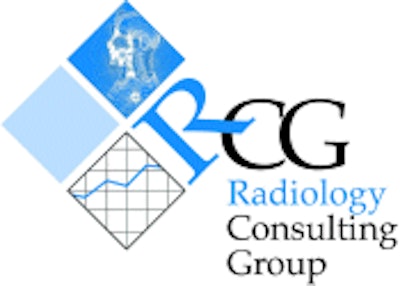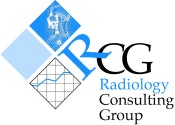
AuntMinnie.com is pleased to present the ninth in an ongoing series of practice management articles contributed by the Radiology Consulting Group in Boston. This twice-monthly series addresses topics and issues of concern to radiology administrators and business managers.
By Nancy J. SperoniRadiology Consulting Group

The radiology department at Massachusetts General Hospital (MGH) in Boston is a large and growing business, with 19 clinical sections in operation as well as new programs such as 3-D imaging, virtual colonoscopy, and cardiac CT. In addition, two full-service radiology clinics have recently opened that serve the Boston suburbs.
Add to these business units12 different administrative sections, 9 research areas, and 10 educational programs, and the scope of gathering and processing information into a coherent whole at first seemed like an impossible challenge. Developing a large-scale radiology department Web site can be a daunting experience.
The key to producing an effective informational Web site is to devise a process that will result in a good balance between your message and the user’s needs. Our team started by separating each section of the department into manageable units. In addition, we followed a seven-step development process that saved us both time and money.
Define objectives
Quality time spent during this phase of production will save incalculable hours later in the development process. At this crucial development phase the following questions must be answered before moving ahead with site design.
- What is the site’s mission?
- What do you want your Web presence to accomplish?
- Who is the target audience?
The Web development and radiology marketing teams sought to integrate the department’s long- and short-term business goals with the development of the Web site. They created a comprehensive needs-analysis worksheet to help guide the department through this process. Discussions with key members of the department were held to determine and coordinate the branding elements to be used on both the Web site and on collateral marketing material.
Next, the selection of an appropriate uniform resource locator (URL) or domain name for the site and registration of that name must be completed. It's important to note that because the radiology department is part of the MGH organization, decisions on how to incorporate the department’s Web site into the MGH Web site were addressed during this phase of the site development.
Information architecture
The next step in the process is to determine the site structure. This was accomplished through an inventory of the department’s existing content and assets. We then performed a needs analysis with the staff for new content development. Finally, we created a small, flat, prototype site without functionality to clarify user interface, navigation, and design approach issues.
Site architecture and design
At this point in the development process, branding and design standards achieve final approval. Illustrations, photography, and other content is specified and created. The site architecture, navigational map, mature content components, and final page design are completed and approved. The goal at this stage is to have all the site components ready for production.
Production
The site’s pages are now populated with content, graphics, illustrations, and photographs by the development team. At this stage, the clients can view a fully functional draft of the site. For security purposes, the site should be accessible only via a private, client-only server.
Quality assurance, usability testing, site launch
This step involves thorough testing of navigation, menus, and links. The entire site is tested on multiple browser versions, on different size and resolution monitors, and on different operating systems. We also tested our site using different Internet access speeds. Areas of the site with excessive download times were then optimized for faster viewing.
Usability testing ensures that your target audience will understand and be able to navigate the format and functions of your site. We accomplished this by allowing objective users to access the site and then provide feedback to the design team.
The site is then published to the server for viewing on the Web, but the work is not complete. At this time, the site should be submitted for indexing with the major search engines and directories, such as Yahoo and InfoSeek. Note that it may take up to three weeks for these services’ Web crawlers to reach your site, so developers shouldn't expect it to show up immediately on these indices.
Tracking and maintenance
Diligence to the tasks involved in the post-launch segment is essential for ongoing success. Links on the Web are perishable and need periodic checking. Web server tracking statistics offer valuable quantitative data about a site’s visitors, such as most requested pages, downloads, geographic demographics, top requested keyword and phrase searches, and much more.
As you develop data on the usage of your site, you can begin to refine it, improving areas that are generating the greatest user response and eliminating site content that attracts few readers. Maintenance and routine updates are essential: old content must be removed and new information added regularly to attract repeat visitors to the site.
Marketing and self-promotion
Marketing the site through various mailings, e-mails, brochures, and word of mouth is essential. The URL should appear on every piece of correspondence, business cards, and collateral material. After all, there is no point in developing a site if no one sees it.
Ensuring top site ranking is an ongoing process. Careful routine monitoring of keyword placement in the meta tags is a reliable way of generating more hits from the target audience.
Search engines (such as AltaVista, Google, and so on) use code-generated tools called spiders to crawl the Web looking for meta tags. These spiders search site pages to gather information and build their indices. Directories (such as Yahoo and Lycos) use information that you submit directly to build their indices. Directories also search entire Web sites, not individual pages.
And, of course, tell everyone about the site.
By Nancy J. SperoniAuntMinnie.com contributing writer
August 9, 2001
Speroni recommends the following books for further information on Web site development and deployment.
Usability
Designing Web Usability: The Practice of Simplicity, Jakob Nielsen, New Riders Publishing, Indianapolis, 2000
Don't Make Me Think: A Common Sense Approach to Web Usability, Steve Krug, New Riders Publishing, Indianapolis, 2000
Web Site Usability Handbook, Mark Pearrow, Charles River Media, Hingham, MA, 2000
Web marketing
NetResults.2, Nick Bruner, New Riders Publishing, Indianapolis, 2001
E-volve or Die, Mitchell Levy, New Riders Publishing, Indianapolis, 2001
Marketing on the Internet, Seven Steps to Building the Internet into Your Business, Fifth Edition, Jan Zimmerman, Maximum Press, Gulf Breeze, FL, 2001
Web navigation
Web Navigation: Designing the User Experience, Jennifer Flemming, O'Reilly Publishing, Sebastopol, CA, 1998
Information architecture
Information Architecture for the WWW, L. Rosenfeld, P. Morville, O'Reilly Publishing, Sebastopol, CA, 1998
Practical Information Architecture: A Hands-on Approach to Structuring Successful Web Sites, Eric Reiss, Addison Wesley, Boston, 2001
Web development and project management
Collaborative Web Development, Strategies and Best Practices for Web Teams, Jessica Burdman, Addison Wesley, Boston, 1999
Web Project Management, Ashley Friedlein, Academic Press, Burlington, MA, 2001
Web content
Killer Content, Mai-Lan Tomsen, Addison Wesley, Boston, 2000
Wired Words: Language is the New Identity, Steve Morris, Prentice Hall, Upper Saddle River, NJ, 2000
Web design
Elements of Web Design, Darcy DiNucci, PeachPit Press, Berkeley, CA, 1998
Web Style Guide, Patrick Lynch, Sarah Horton, Yale University Press, New Haven, CT, 1999
Web Design in a Nutshell: A Desktop Quick Reference, Jennifer Niederst, O'Reilly Publishing, Sebastopol, CA, 1999
Related Reading
e-Radiology enhances marketing opportunities, July 24, 2001
Proper training can reduce errors in PACS implementation, July 4, 2001
Strategic marketing brings in referring physicians, June 27, 2001
Radiology and orthopedics join forces to cut throughput time, June 13, 2001
PACS quality control ensures that exams get read, May 30. 2001
Copyright © 2001AuntMinnie.com
















